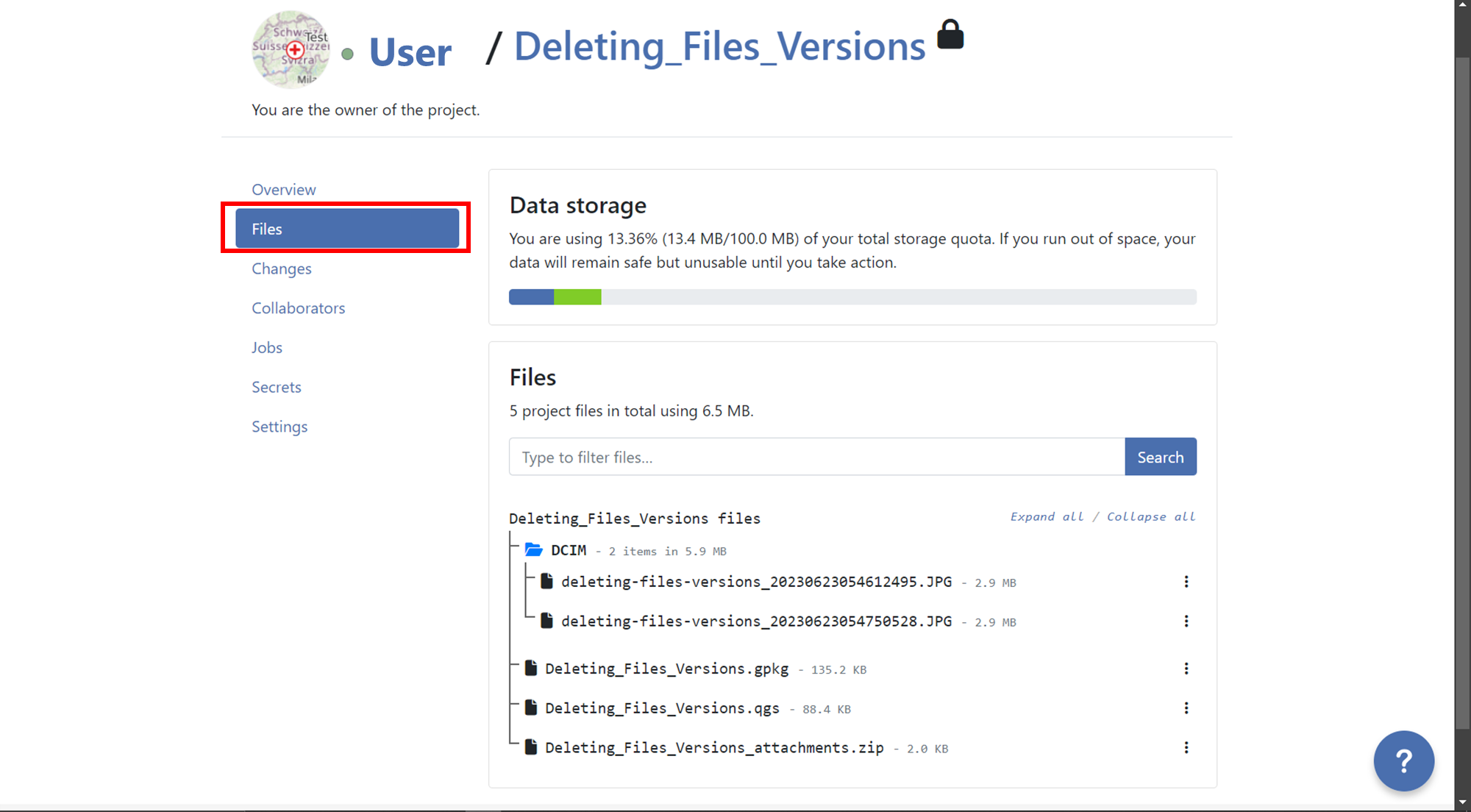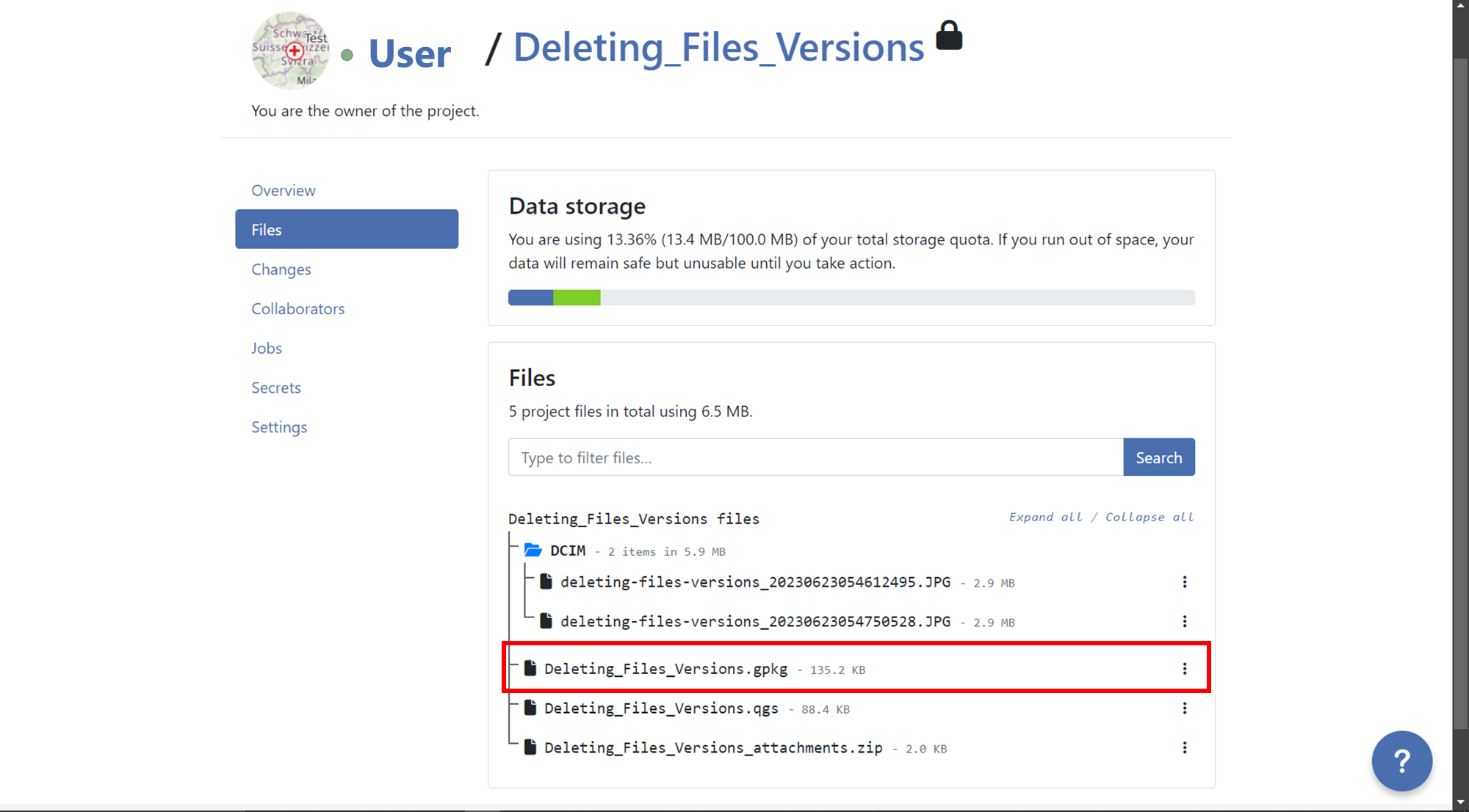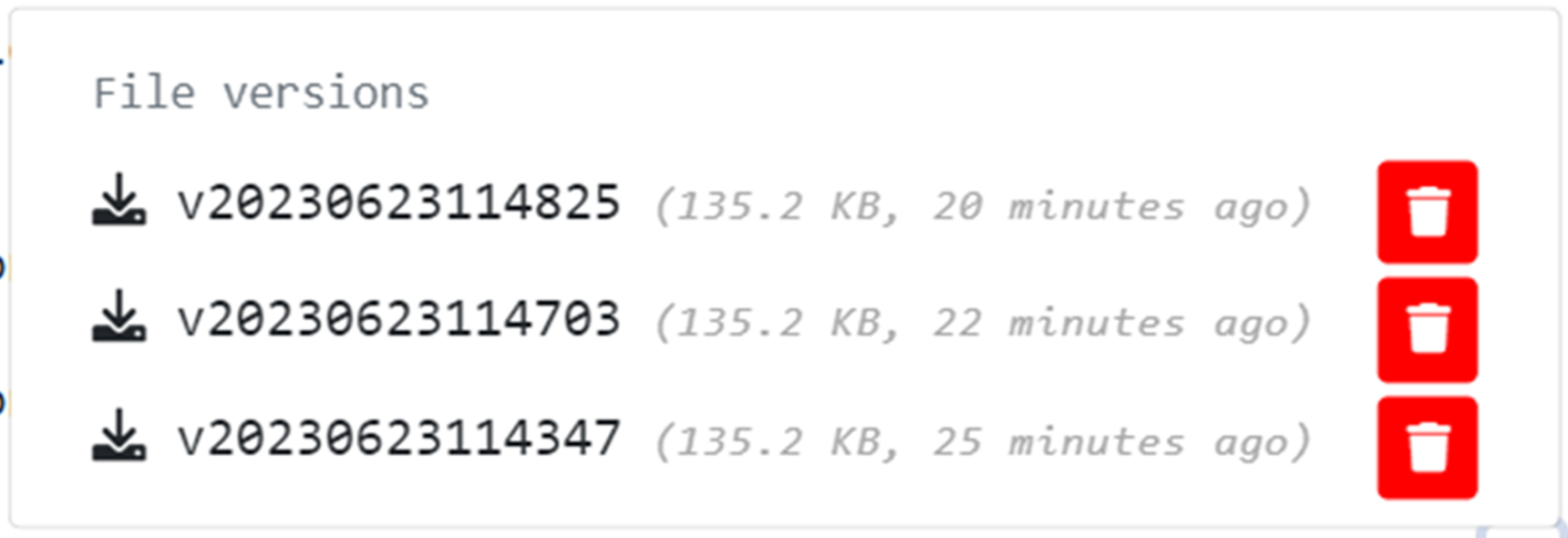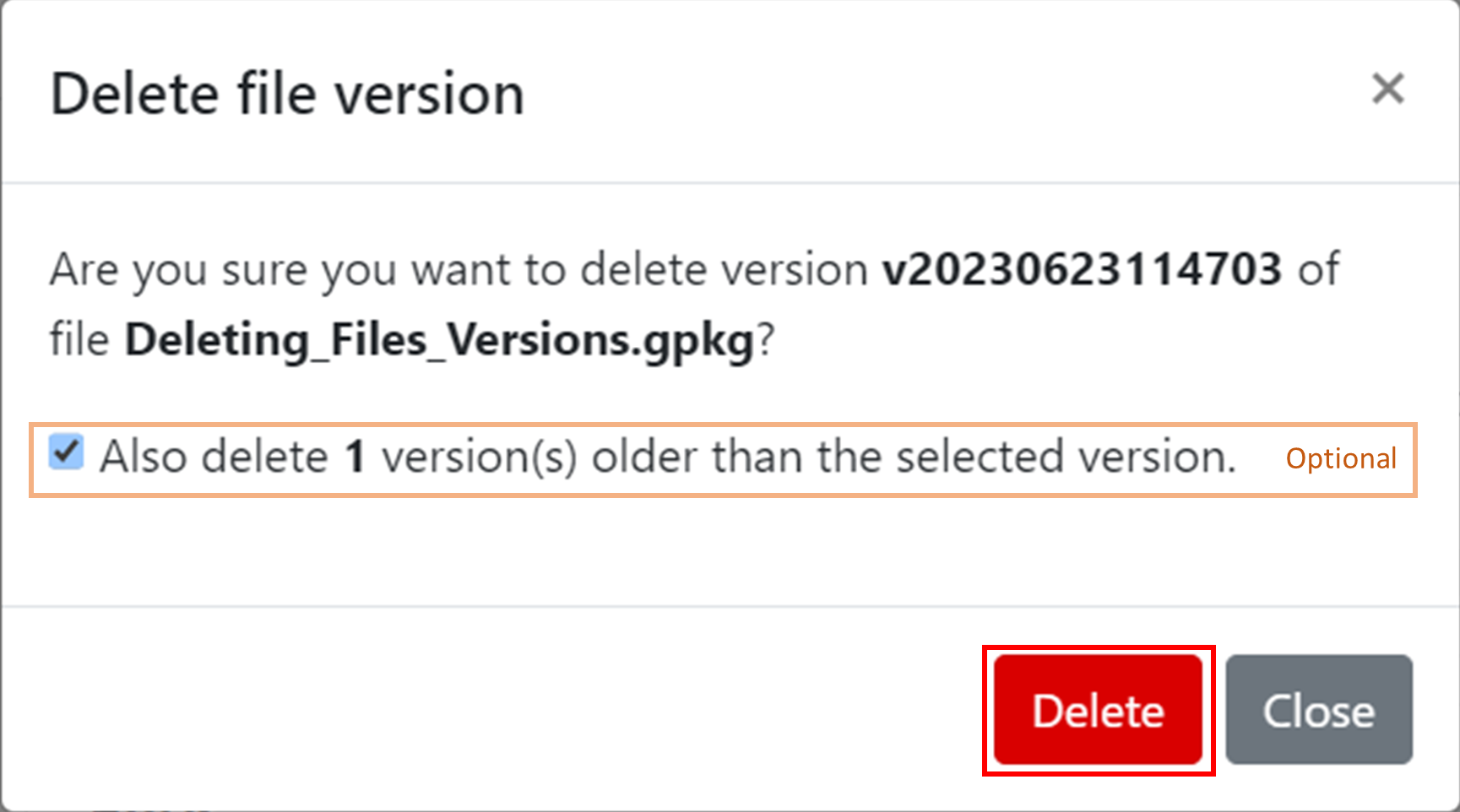Proyectos
Los proyectos son los principales contenedores de datos en QFieldCloud. Los usuarios pueden crear cualquier número de proyectos. Los proyectos deben contener un único archivo QGIS .qgs/.qgz, y además pueden contener cualquier combinación de archivos geoespaciales -- GeoPackages, Shapefiles, TIFs -- o archivos de datos como fotos, PDFs, etc. Los archivos no pueden compartirse entre proyectos.
Los proyectos QFieldCloud tienen un nombre y un propietario. El propietario de un proyecto es un usuario de QFieldCloud o una organización. No puede haber dos proyectos con el mismo par
Los proyectos pueden marcarse como públicos o privados. A los proyectos privados sólo pueden acceder los usuarios añadidos a un proyecto como colaboradores del mismo. Los proyectos públicos son visibles y pueden ser descargados por cualquier usuario de QFieldCloud.
Crear un proyecto¶
Se puede crear un proyecto de dos maneras diferentes: utilizando la interfaz web de QFieldCloud o utilizando QFieldSync en QGIS.
Archivos¶
Los archivos son el esqueleto sobre el que funciona el proyecto QFieldCloud. Para hacer un proyecto QFieldCloud vivo los usuarios necesitan subir al menos un único archivo de proyecto QGIS en los formatos de archivo .qgs o .qgz. Todos los archivos geoespaciales deben subirse utilizando las mismas rutas relativas que en el propio ordenador. Si se utiliza simbología externa SVG o raster, los usuarios deben cargar también los archivos correspondientes.
Nota
QFieldCloud no admite proyectos almacenados en archivos GeoPackage (.gpkg) (pero los usuarios pueden seguir utilizando archivos GeoPackage para almacenar conjuntos de datos para sus proyectos).
La estructura típica de un archivo QGIS podría ser algo así:
project
├── data
│ ├── basemap.tif
│ ├── bees.gpkg
│ └── fields.gpkg
├── symbology
│ ├── icon.svg
│ └── line-pattern.png
├── DCIM
│ ├── bees-20220404121212.jpg
│ ├── bees-20220405040506.jpg
│ └── fields-20220405040607.jpg
└── project.qgs
Versiones de archivo¶
QFieldCloud utiliza el versionado de archivos. Esto permite a los usuarios restaurar a una versión anterior de cualquier archivo modificado. Los archivos y sus versiones se encuentran en la sección Archivos de los proyectos. Los planes de suscripción permiten un número diferente de versiones por archivo. Consulta la página de precios de qfield.cloud para obtener más información (https://qfield.cloud/pricing.html).
Borrar versiones de archivo antiguas¶
Para garantizar que sólo se conservan las versiones relevantes de los archivos, y para reducir la cantidad de almacenamiento que necesitan las cuentas, los usuarios pueden eliminar las versiones obsoletas de los archivos. Se pueden eliminar manualmente versiones de archivos desde la sección Archivos del proyecto.
Para eliminar versiones de archivos en QFieldCloud, sigue estos pasos:
- Vaya a la sección "Archivos" de su proyecto.

- Localice la capa para la que quiere borrar versiones.

- Haga clic en los tres puntos próximos al nombre de la capa.

- Verá una lista de versiones para esa capa específica.

- Identifique la versión que quiere borrar y haga clic en el icono de la papelera roja próximo a ella.

- Confirme el borrado cuando se le pregunte. Si quiere borrar todas las versiones anteriores a una versión específica, puede hacerlo activando la opción "Borrar también
nversiones más antiguas que la versión seleccionada.".
- Después de borrar aparecerá un mensaje emergente con el éxito y la lista de versiones solo mostrará las versiones que no se seleccionaron para borrar.

Colaboradores¶
Un colaborador de proyecto es un usuario de QFieldCloud invitado a contribuir a un proyecto. Un mismo proyecto puede tener varios colaboradores. Los colaboradores con roles propietario o administrador pueden añadir más usuarios como colaboradores. Los proyectos propiedad de una organización permiten añadir equipos como colaboradores. Más información sobre roles de colaborador.
Cambios¶
Los cambios realizados en capas vectoriales y cargados en QFieldCloud desde un dispositivo QField aparecerán aquí. Un cambio almacena la diferencia entre atributos o geometrías antes y después de la carga.
Cambia el registro del método utilizado para la carga; puede ser uno de los siguientes:
create- se ha creado una nueva función.delete- se ha eliminado un objeto espacial existente.patch- se ha modificado un objeto espacial existente.
Los objetos espaciales que se han creado y eliminado posteriormente sin haber sido enviadas a QFieldCloud no aparecen en los cambios del proyecto.
Nota
Los cambios en las capas vectoriales en línea (PostGIS, WFS) que no tienen la acción de capa de nube "Edición fuera de línea" no generan un cambio, sino que modifican la fuente de datos original directamente.
Nota
Los cambios en las capas vectoriales realizados en QGIS no aparecerán aquí.
Trabajos¶
Saber más de project jobs.
Secretos¶
Los secretos son configuraciones que se almacenan de forma segura y encriptada. Los trabajos del proyecto tienen acceso automático a sus secretos. Una vez añadido, un secreto puede eliminarse, pero no editarse.
Hay dos tipos de secretos:
- Variables de entorno - Las variables de entorno estarán disponibles para QGIS mientras se ejecuten los trabajos de su proyecto.
- pgservice connection - Una conexión PostgreSQL/PostGIS como la definida en el archivo de configuración
.pg_service.conf. Si utiliza varias definiciones de servicio, deberá añadir varios secretos para cada una de ellas.
Configuraciones¶
Los ajustes del proyecto sólo están disponibles para los propietarios del proyecto y los colaboradores con funciones de "administrador". Los Configuraciones deben manejarse con cuidado, ya que los usuarios pueden modificar configuraciones sensibles del proyecto y realizar acciones irrecuperables.
- Cambiar la visibilidad del proyecto a público:
- Cambiar el propietario del proyecto:
- Permanentemente eliminar un proyecto:
- etc
Advertencia
Las acciones realizadas desde la página de configuración de un proyecto pueden provocar la pérdida de datos.